The American Era marked a significant turning point in the history of Filipino writing. This period saw the rise of vernacular languages as a medium for artistic expression and cultural preservation. Before this, storytelling was primarily oral, passed down through generations. The introduction of formal education and print media under American rule transformed how stories were shared and recorded.
During this time, Filipino authors began to explore themes of identity, resistance, and adaptation. Their work reflected the struggles and aspirations of a nation under colonial influence. Prose, poetry, and drama flourished, blending traditional forms with modern ideas. This fusion created a unique literary landscape that continues to inspire today.
The evolution of Filipino writing during the American Era also highlights the resilience of local cultures. Despite external pressures, vernacular languages thrived, becoming a powerful tool for self-expression. This period laid the foundation for a rich literary tradition that remains a vital part of the Philippines’ cultural heritage.
Key Takeaways
- The American Era transformed Filipino storytelling from oral to written traditions.
- Vernacular languages became a key medium for cultural preservation and artistic expression.
- Prose, poetry, and drama evolved to reflect themes of identity and resistance.
- Filipino authors blended traditional and modern forms to create a unique literary style.
- This period laid the foundation for the Philippines’ rich literary heritage.
Introduction to Filipino Literature in the American Era
The American colonial period reshaped the way Filipino authors expressed their cultural identity. This era marked a significant shift in the time when storytelling evolved from oral traditions to written forms. The introduction of formal education and print media played a crucial role in this transformation.
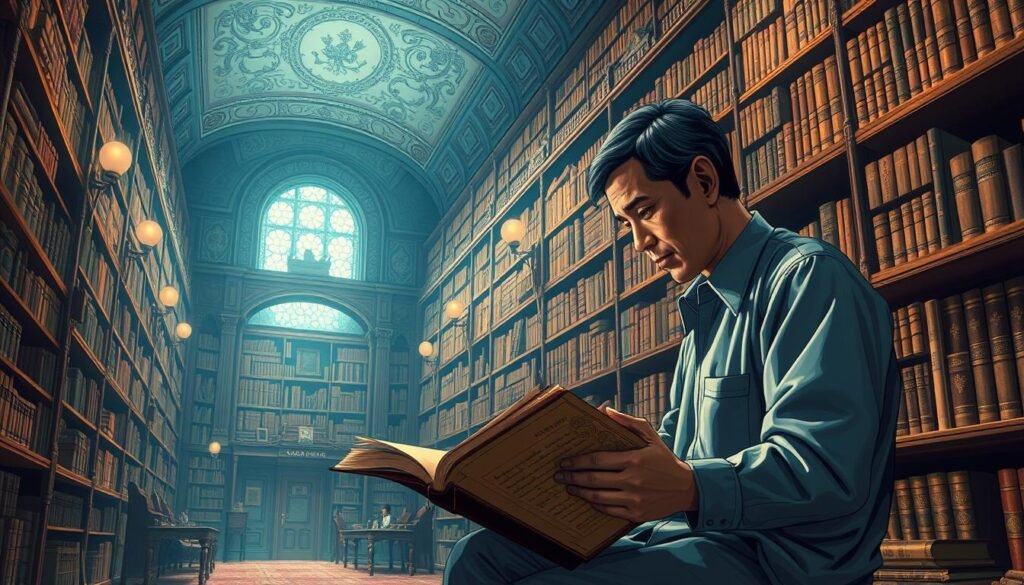
During this time, key authors emerged, leaving a lasting impact on the literary world. Writers like Jose Garcia Villa and Paz Marquez Benitez explored themes of identity and resistance. Their works reflected the struggles of a nation under colonial influence.
The historical context of the American Era also altered perceptions of writing. It became a tool for cultural preservation and self-expression. As one author noted,
“Writing became our way of reclaiming our voice in a colonized world.”
The interplay between colonizer and colonized led to the establishment of new literary conventions. Filipino authors blended traditional forms with modern ideas, creating a unique style. This fusion laid the foundation for a rich literary tradition.
Below is a table highlighting key authors and their contributions during this time:
| Author | Contribution |
|---|---|
| Jose Garcia Villa | Pioneered modernist poetry in English |
| Paz Marquez Benitez | Authored “Dead Stars,” a landmark short story |
| Manuel Arguilla | Won the Commonwealth Literary Contest in 1940 |
| Carlos Bulosan | Wrote “America Is In The Heart,” a seminal work |
This period not only shaped the literary world of the Philippines but also influenced global perceptions of Filipino creativity. The resilience of local cultures and the innovative way authors approached their craft continue to inspire generations.
Historical Context and the Evolution of Literature
The roots of Filipino storytelling stretch back to ancient oral traditions, long before written forms emerged. These traditions were the primary source of cultural knowledge, passed down through generations. Myths, legends, and historical events were shared through spoken word, creating a rich tapestry of communal memory.
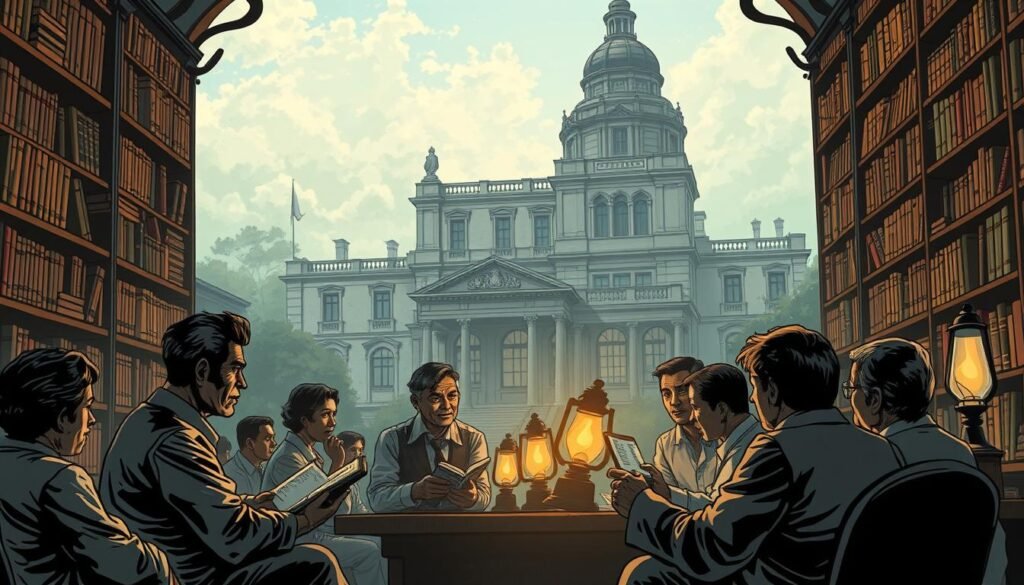
Pre-Colonial Beginnings and Oral Roots
Before the arrival of colonizers, Filipino communities relied on oral recitations to preserve their heritage. Poetry played a central role, often accompanied by music and dance. This form of expression was not just entertainment but a way to teach values and history.
For example, the hudhud of the Ifugao people is a UNESCO-recognized oral tradition. It showcases how pre-colonial societies used storytelling to maintain their identity. These practices laid the groundwork for later literary developments.
American Era Reforms and Transformations
The American colonial period brought significant changes to Filipino literary forms. The introduction of formal education and print media allowed written works to flourish. Western influences blended with local traditions, creating a unique literary style.
During the 20th century, Filipino authors began experimenting with new genres and themes. This period marked a shift from purely oral traditions to a more structured approach to writing. The study of literature also gained importance, shaping the future of Filipino artistic expression.
Below is a table highlighting key examples of literary evolution:
| Period | Form | Example |
|---|---|---|
| Pre-Colonial | Oral Poetry | Hudhud of the Ifugao |
| American Era | Written Prose | “Dead Stars” by Paz Marquez Benitez |
| Modern Era | Blended Genres | Works of Jose Garcia Villa |
This evolution highlights the resilience and adaptability of Filipino storytelling. From oral traditions to written masterpieces, the journey reflects a deep connection to cultural identity.
The Role of Vernacular Languages in Shaping Literary Identity
Vernacular languages became the heartbeat of Filipino literary identity during the American Era. These native dialects were more than just tools for communication—they were vessels of cultural heritage and social realities. By embracing their mother tongues, Filipino authors created a unique literary style that resonated deeply with their audience.
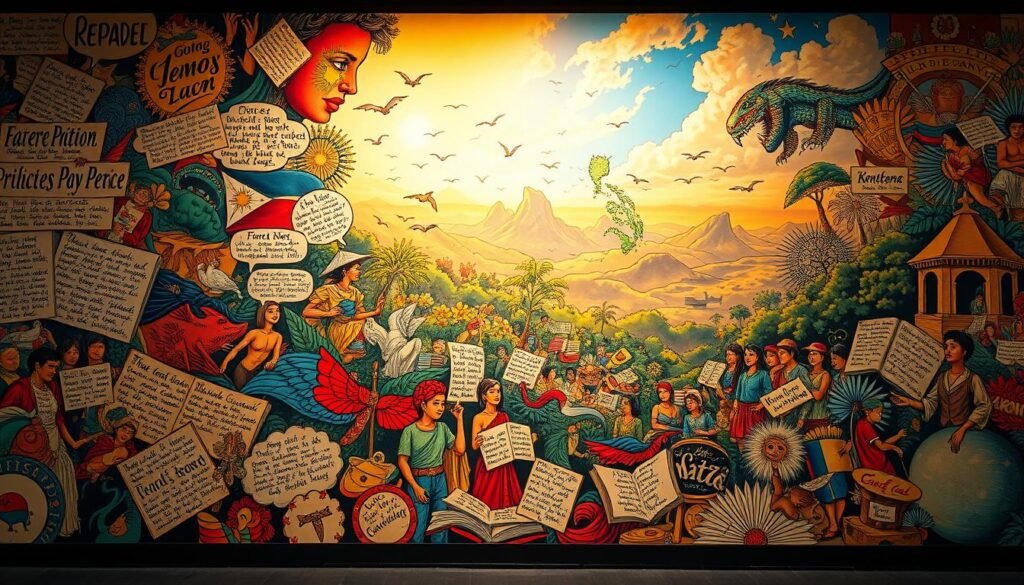
Language as a Reflection of Cultural Identity
Vernacular languages served as a mirror of Filipino culture, reflecting traditions, values, and struggles. Unlike colonial languages, which often imposed foreign perspectives, native dialects preserved local narratives. For example, works in Tagalog, Cebuano, and Ilocano captured the essence of regional life, offering readers a glimpse into diverse worldviews.
During this year, authors began experimenting with vernacular forms, blending traditional storytelling with modern techniques. This fusion created a rich literary field that celebrated Filipino identity. As one writer noted, “Our words are our weapons—they carry the soul of our people.”
The use of vernacular languages also provided a counterpoint to Western literary models. While English dominated the colonial field, native dialects offered an authentic voice. This contrast highlighted the resilience of Filipino culture, proving that language is more than a medium—it is a statement of identity.
Today, the legacy of vernacular languages continues to inspire. They remind us that every word carries the weight of history, and every novel is a testament to the enduring spirit of the Filipino people.
Oral Traditions and the Birth of Written Works
The shift from oral storytelling to written works marked a pivotal moment in Filipino cultural history. For centuries, stories were passed down through generations by word of mouth, preserving myths, legends, and moral lessons. This oral tradition was the foundation of Filipino identity, connecting communities through shared narratives.
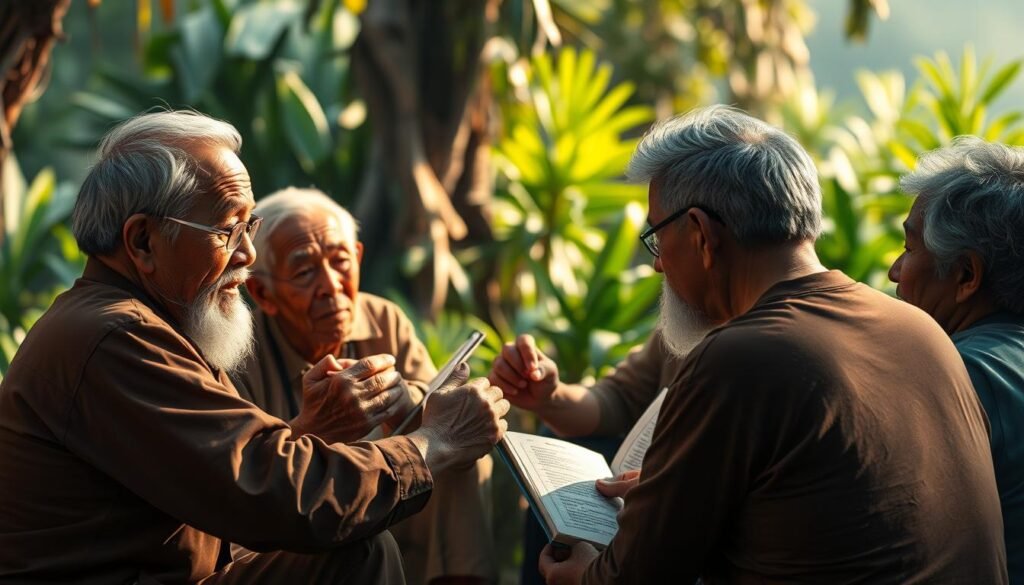
From Oral to Written: The Transition
Traditional storytellers played a crucial role in this transition. They were the keepers of cultural memory, weaving tales that reflected the values and struggles of their people. As written forms emerged, these storytellers became the first writers, adapting their oral narratives into structured texts.
Early Filipino authors drew inspiration from epic poetry and folk narratives. These genres provided a framework for exploring themes of heroism, love, and resilience. By blending traditional storytelling with modern techniques, they created a unique literary form that resonated with readers.
Preserving Culture Through Storytelling
Oral literature not only preserved cultural memory but also challenged conventional literary categories. For example, the hudhud of the Ifugao people, a UNESCO-recognized oral tradition, showcases how storytelling can be both educational and entertaining. This blend of didactic and artistic elements influenced the development of written works.
Critical reviews of this transition highlight the adaptability of Filipino storytelling. Scholars note how oral traditions shaped the narrative form of early written works, creating a bridge between the past and the present. This evolution reflects the enduring power of storytelling as a tool for cultural preservation.
| Oral Tradition | Written Adaptation |
|---|---|
| Epic Poetry | Structured Prose |
| Folk Narratives | Short Stories |
| Moral Lessons | Didactic Texts |
This transition from oral to written forms laid the groundwork for a rich literary tradition. It showcased the resilience of Filipino culture and the creativity of its writers, who continue to inspire new generations with their work.
Shifts in Literary Criticism and Canonical Definitions
The definition of what constitutes great writing has evolved significantly over time. Historically, the literary canon was a rigid collection of works deemed exemplary by Western standards. However, shifts in criticism have expanded these definitions, embracing a more diverse range of voices and styles.
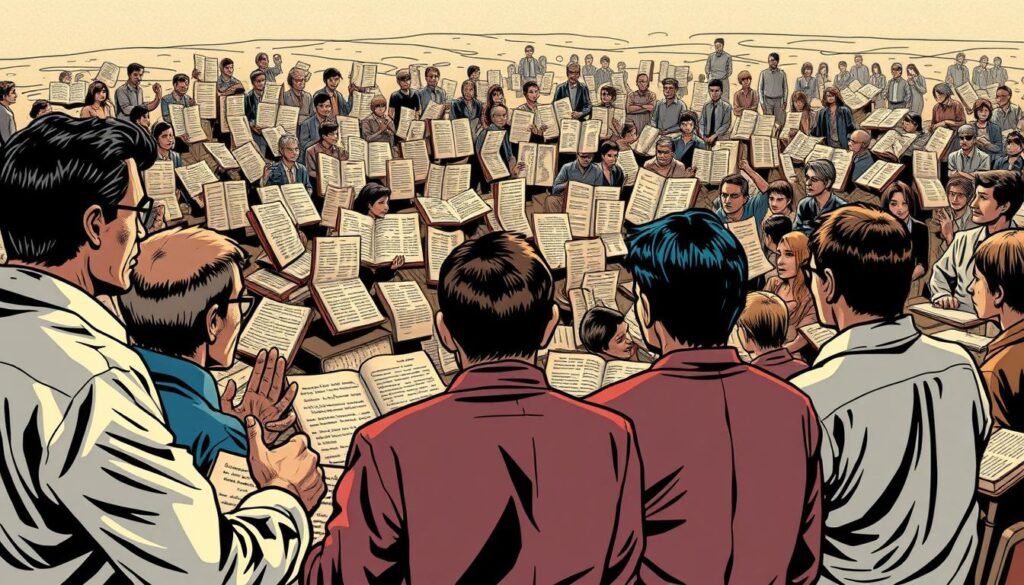
Redefining Canon and the Value of Creativity
In the past, the canon was dominated by works in English and other colonial languages. Critics often excluded texts from non-Western cultures, limiting the scope of what was considered valuable. Today, the debate around the canon has shifted. Scholars now argue for a more inclusive approach, recognizing the richness of global fiction and narrative traditions.
This transformation reflects broader societal changes. As one critic noted, “The canon is no longer a fixed list but a living conversation.” This shift has allowed for the inclusion of works that challenge traditional norms, offering fresh perspectives on identity, culture, and history.
Fiction has played a pivotal role in this evolution. By blending innovative language with compelling narratives, authors have pushed the boundaries of what is considered literary. This creative freedom has redefined artistic merit, emphasizing the importance of originality and cultural relevance.
Global trends have also influenced these changes. The rise of postcolonial texts has highlighted the voices of marginalized communities, challenging the dominance of Western traditions. This inclusivity has enriched the literary landscape, fostering a deeper understanding of diverse cultures.
Ultimately, the value of creativity lies in its ability to inspire and provoke thought. As the canon continues to evolve, it serves as a testament to the enduring power of storytelling. By embracing diverse voices and innovative approaches, we ensure that literature remains a vibrant and dynamic art form.
American Influence on Filipino Literary Education
The American colonial administration introduced sweeping changes to the Philippine education system, profoundly impacting literary studies. These reforms aimed to prepare Filipinos for self-governance while integrating Western academic principles. The shift to English as the primary medium of instruction opened new avenues for literary expression and critical analysis.
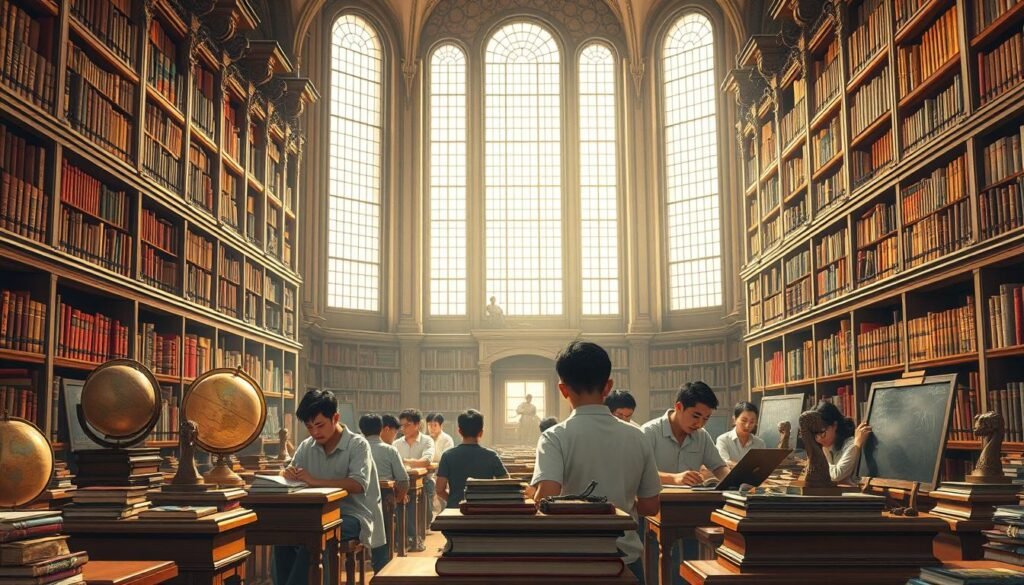
Curriculum Reforms and Educational Shifts
American educational reforms reshaped the study of literature in the Philippines. Universities began emphasizing literary theory and criticism, moving beyond traditional storytelling. The curriculum included works from global authors, broadening the body of literary studies. This approach encouraged students to analyze texts critically, fostering a deeper understanding of cultural narratives.
For example, the Department of Education prescribed reading materials from different regions each school year. This exposure helped students appreciate diverse perspectives. The integration of science-based methods in literary analysis also marked a significant shift. Scholars began systematically studying texts, linking them to societal and historical contexts.
The Emergence of New Literary Voices
These reforms paved the way for the emergence of new literary voices. Filipino writers, influenced by Western models, began experimenting with themes of identity and nationalism. The university became a hub for creative expression, nurturing talents who blended traditional and modern styles.
The role of the reader also evolved during this period. Readers became active agents in interpreting texts, engaging with works that reflected both local and global issues. This shift highlighted the importance of literature as a tool for cultural preservation and social commentary.
| Aspect | Impact |
|---|---|
| Curriculum Reforms | Increased focus on literary theory and global works |
| University Education | Nurtured new literary voices and critical thinking |
| Reader Engagement | Active interpretation of diverse literary texts |
| Scientific Approach | Systematic study of cultural narratives |
These changes not only transformed literary education but also enriched the Philippines’ cultural heritage. The legacy of this period continues to inspire modern writers and scholars. For more insights, explore the impact of American influence on Filipino.
Embracing Literature as a Multifaceted Art
The exploration of literature as a multifaceted art form has redefined creative boundaries. It is no longer confined to traditional storytelling but embraces a blend of content, form, and innovative expression. This shift has allowed writers to experiment with new ideas, challenging conventional definitions and expanding the scope of artistic creation.
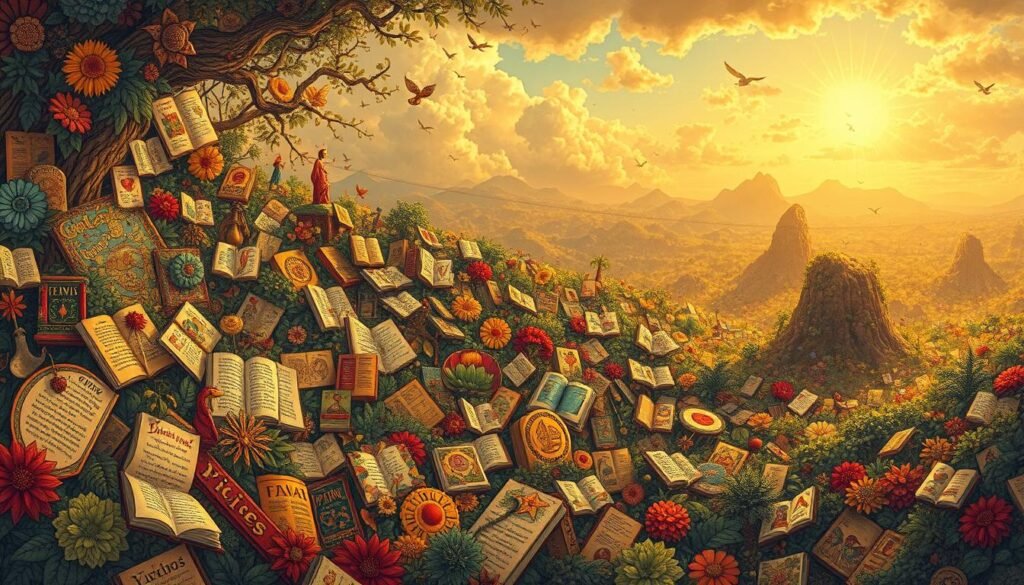
Innovation in Style and Expression
Modern authors are pushing the limits of style, blending narrative techniques with visual and auditory elements. This fusion creates a unique material that engages readers on multiple levels. For example, graphic novels and interactive digital stories are redefining how stories are told and experienced.
These innovations highlight the evolving definition of literature. It is no longer just about words on a page but about creating immersive experiences. As one critic noted, “The future of storytelling lies in its ability to adapt and innovate.”
The Dual Nature of Content and Form
Literature thrives on the interplay between content and form. Writers are increasingly experimenting with structure, using unconventional formats to convey their ideas. This approach allows for deeper exploration of themes and emotions, making the reading experience more impactful.
For instance, fragmented narratives and nonlinear storytelling challenge readers to engage more actively. This dual focus on content and form enriches the art of writing, offering fresh perspectives on familiar themes.
Modern Perspectives on Creativity
Today’s literary works reflect a broader understanding of creativity. Authors are incorporating diverse cultural influences and interdisciplinary approaches into their material. This inclusivity has expanded the boundaries of what literature can achieve, fostering a richer artistic landscape.
Below is a table showcasing examples of contemporary works that blend content and form:
| Work | Innovative Approach |
|---|---|
| “House of Leaves” by Mark Z. Danielewski | Nonlinear narrative and typographical experimentation |
| “The Night Circus” by Erin Morgenstern | Immersive world-building and sensory storytelling |
| “S.” by J.J. Abrams and Doug Dorst | Interactive narrative with handwritten notes and inserts |
These examples illustrate how the evolving definition of art continues to inspire creativity. By embracing new ideas and formats, literature remains a dynamic and ever-evolving art form. For further insights, explore the influence of literature on society.
Transformation of Literary Genres in the Philippines
The transformation of literary genres in the Philippines reflects a dynamic interplay between tradition and innovation. Over time, Filipino writers have redefined the boundaries of storytelling, blending old and new forms to create unique works. This evolution has reshaped the literary landscape, offering fresh perspectives on identity, culture, and society.
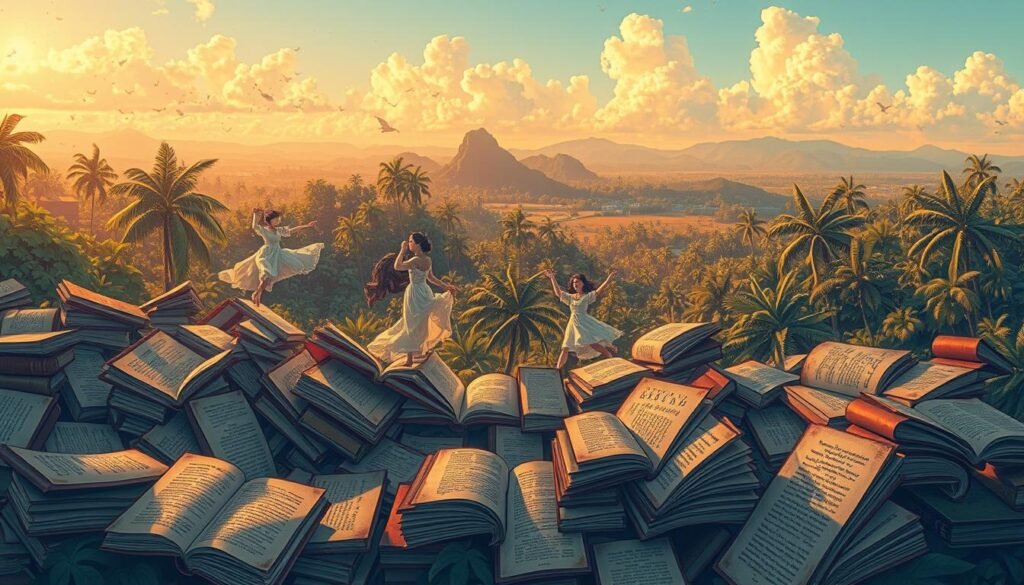
Evolution from Poetry to Prose
In the early stages, poetry dominated Filipino storytelling. Epic narratives and oral traditions were the primary category of expression. These works often focused on themes of heroism, love, and cultural identity. However, the introduction of prose narratives marked a significant shift.
Prose allowed writers to explore complex content in greater detail. Stories became more structured, offering deeper insights into societal issues. This transition also reflected the influence of Western literary models, which emphasized realism and character development.
Genre Blending in Contemporary Works
Today, Filipino authors are pushing the boundaries of traditional genres. They combine elements of poetry, prose, and even visual art to create hybrid forms. This genre blending challenges conventional lists of literary categories, offering readers a richer experience.
For example, graphic novels and interactive digital stories have gained popularity. These works often address modern questions about identity and technology. By blending genres, authors can explore themes in innovative ways, making their work more accessible and engaging.
Below is a list of notable works that exemplify this transformation:
- “Dead Stars” by Paz Marquez Benitez – A landmark short story blending realism and romance.
- “America Is In The Heart” by Carlos Bulosan – A memoir that combines prose and social commentary.
- “The Night Circus” by Erin Morgenstern – A contemporary novel that blends fantasy and immersive storytelling.
These examples highlight the evolving nature of Filipino storytelling. By embracing new forms and techniques, writers continue to redefine the literary category. For more insights, explore the diverse literary forms in Philippine literature.
Cultural and Societal Impacts on Filipino Writing
Filipino writing has long served as a mirror to the nation’s cultural and societal struggles. From colonial oppression to modern-day activism, authors have used their craft to reflect the facts of history and inspire change. This section explores how societal events and war have shaped the themes and styles of Filipino writing.
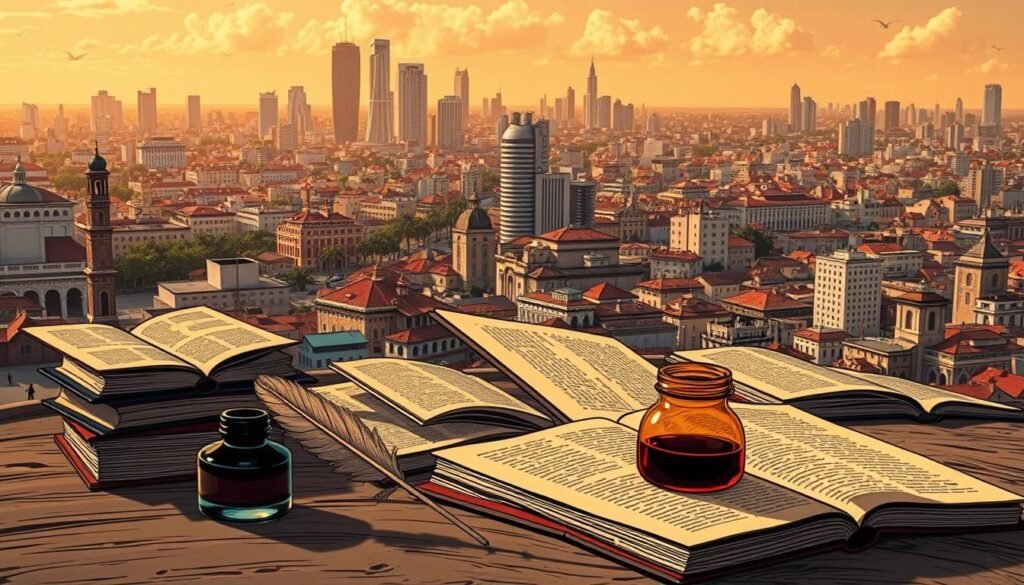
Literary Activism and Social Change
Filipino writers have often turned to their craft as a tool for activism. During the American colonial period, works like Jose Rizal’s Noli Me Tangere exposed the harsh realities of colonial rule. These texts became powerful instruments for social commentary, using vivid images to communicate national struggles.
In the aftermath of war, Filipino writing evolved to address themes of resilience and identity. Authors like Carlos Bulosan documented the experiences of Filipino migrants, blending personal narratives with broader societal issues. This approach not only preserved cultural memory but also inspired new forms of artistic expression.
Today, Filipino writing continues to adapt to new challenges. From environmental crises to political corruption, authors are using their work to advocate for change. This ongoing evolution highlights the enduring power of writing as a vehicle for social transformation.
| Event | Literary Response |
|---|---|
| Spanish Colonization | Works like Noli Me Tangere exposed colonial abuses |
| World War II | Stories of resilience and survival emerged |
| Modern Activism | Contemporary works address issues like climate change and human rights |
These examples illustrate how Filipino writing has consistently responded to societal challenges. By blending fact with creativity, authors have created a rich literary tradition that continues to inspire. For more insights, explore the cultural impacts on Filipino writing.
Conclusion
The development of Filipino writing in vernacular languages during the American Era highlights the resilience and creativity of local authors. This period transformed storytelling, blending traditional forms with modern ideas. The use of native dialects preserved cultural identity, offering a unique value to each story.
Filipino authors explored themes of identity and resistance, creating works that resonated deeply with their audience. Their contributions enriched the broader canon of English literature, showcasing the power of storytelling as a tool for cultural preservation. This era laid the foundation for a rich literary tradition that continues to inspire.
Understanding this evolution reminds us of the importance of studying and appreciating writing as an evolving art form. It challenges and inspires readers, connecting past influences with modern creative practices. For more insights on concluding literary reviews, explore this guide.
FAQ
How did the American era influence Filipino writing?
The American era brought educational reforms and introduced English, which influenced the evolution of Filipino writing. This period saw a blend of traditional themes with modern styles.
What role did vernacular languages play in Filipino literature?
Vernacular languages became a way to express cultural identity and preserve local traditions. They helped shape a unique literary voice during the American era.
How did oral traditions transition to written works?
Oral storytelling, deeply rooted in Filipino culture, gradually transitioned to written forms. This shift allowed for the preservation and wider dissemination of stories.
What changes occurred in literary criticism during this time?
Literary criticism began to redefine the canon, emphasizing creativity and the value of diverse voices. This shift encouraged innovation in Filipino writing.
How did American influence affect Filipino literary education?
American reforms introduced new curricula, promoting English and Western literary styles. This led to the emergence of new voices and genres in Filipino literature.
What are the key characteristics of Filipino literature during the American era?
Filipino literature of this period is marked by a blend of traditional and modern elements, experimentation with form, and a focus on cultural and social themes.
How did genres evolve in Filipino literature?
Genres evolved from poetry to prose, with contemporary works often blending multiple styles. This reflects the dynamic nature of Filipino creativity.
What societal impacts did Filipino writing have during this time?
Filipino writing became a tool for activism, addressing social issues and advocating for change. It played a significant role in shaping public consciousness.
How did Filipino writers preserve their culture through literature?
Writers used storytelling to document traditions, values, and history. This ensured that cultural heritage was passed down to future generations.
What is the significance of the American era in Filipino literary history?
The American era was a transformative period that reshaped Filipino literature. It introduced new ideas, styles, and educational systems, leaving a lasting impact on the literary landscape.
Source Links
- The War of Translation: Colonial Education, American English, and Tagalog Slang in the Philippines | The Journal of Asian Studies | Cambridge Core
- Philippine Literature during the American Period – National Commission for Culture and the Arts
- Philippine literature
- History of literature
- Literature | Definition, Characteristics, Genres, Types, & Facts | Britannica
- Vernacular languages shape how we interact and learn. What’s with making Sanskrit compulsory?
- Answers to: How do language and dialect play a role in shaping the identity of Philippine Literature, and what impact does this have on the accessibility of literary works across different regions?
- Imagined Communities LitChart Teacher Edition
- Oral literature | History, Characteristics & Types | Britannica
- African literature – Oral Traditions, Writing | Britannica
- No title found
- Biblical literature – Literary Criticism, Canon, Texts | Britannica
- Philippine literature in English: Tradition &
- Vladimir Tobón: A Multifaceted Artist Embracing Music and Poetry – Writers International Edition
- Philippine literature from the pre colonial period to the contemporary
- The Philippine Literary History
- Translation and the Problem of Realism in Philippine Literature in English
- Philippine Literature in the Spanish Colonial Period – National Commission for Culture and the Arts
- Exploring the Cultural Significance of Filipino Language and Literature – Fluent Filipino
- Writing a Literature Review – Purdue OWL®
- Feature: Conclusion to Literature | ncte.org

